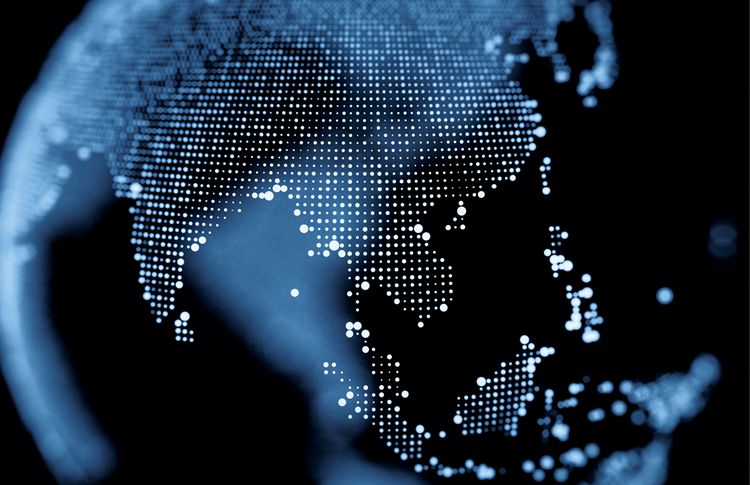
亚洲无疑正在成长为全球首选仲裁及争议解决管辖区之一。伴随此种发展,立足亚洲的企业将有机会接触世界顶尖争议解决机制,该区域律师也将面临诸多机遇。然而,疫情很大程度重塑了亚洲地区纠纷的解决方式,律师们指出,想要受益于最佳机制,数字化转型不可或缺。
全球新冠病例数量仍居高不下,亚洲的纠纷业务因此热闹依旧:不但争议数量持续保持高位,争议类型也出现了显著变化。
胡文俊律师是诺顿罗氏律师事务所香港办公室争议解决合伙人,他说,近期与新冠疫情相关的纠纷日渐增多,其中就包括债务破产纠纷,以及发生在遭受重创行业中的合同纠纷。
“经济下行时,通常会出现缔约方难以履行合同义务的趋势。由于疫情引发的实际损失还未确定,此类合同纠纷可能不会立即显现。但一些长期合同的缔约方或许希望修改合同条款,以避免将来违约。律师很有可能要参与到这种重新协商之中,并为客户提供前瞻性建议。”胡律师说。
此外,疫情和时不时出现的封锁措施促使企业不断收缩预算——有时不得不采取裁员或重组的形式解除劳动合约,而这可能引发未来的纠纷。
“因此引发的雇用纠纷激增,此种趋势可能还会持续一段时间。”胡律师说。
詹诺倍律师是离岸律师事务所凯瑞奥信合伙人,也是该所亚洲诉讼、破产和重组业务负责人。他告诉ALB,该所观察到目前正有“一大批常见的少数群体压迫/不公正偏见纠纷、合伙纠纷、欺诈相关案例,以及破产及重整相关纠纷涌现”。
“不过,过去一两年中的许多纠纷都由疫情项下的清算担忧引发。”詹律师补充道。他解释道,这是因为市场普遍面临着投资表现较差、投资信心丧失、许多股东和/或投资人寻求退出并/或撤资的情况。
策略变化
虽然纠纷络绎不绝,但寻求解决纠纷的方法却在变化。
“客户开始寻求更加高效的手段,而非仅仅借助于传统的诉讼方式。”胡文俊律师说。他指出,新冠疫情“进一步促使当事人寻求仲裁等手段,因为它们的好处显而易见。需要注意的是,全球多数法院都因封锁面临着至少一段时间无法开庭的局面,有时当事人无法出庭,或证人没法从国外飞来作证。”
与此同时,仲裁规则“对此类困境准备更为充分,许可当事人远程参与庭审,且远程庭审机制早在疫情前就十分成熟。和传统诉讼相比,仲裁庭能为当事人提供更大灵活性,以及更高效的结果。尤其在经济下行时期,当事人更希望能够快速解决纠纷,节省法律费用。”胡律师说。
当然,亚洲客户在解决纠纷的同时也希望控制法律支出。对此律师指出,数字化工具能够帮助客户实现此种目的,但此类工具也有自身局限性,并且需要配合大量的事前演练环节。
Adrian Tan是义正律师事务所合伙人,也是麦士威国际争议解决中心董事会成员。他说,疫情撼动了曾经成熟稳固的争议解决机制,在此领域工作的律师必须学会适应,以更好地协助客户。
“争议解决律师往往要花费数十年练就一身庭审本领。他们练习自己的声音、姿态,甚至设计出庭时的个人风貌。他们的交叉询问技巧往往基于多年试错积累的经验。但疫情使这一切都显得过时——线上庭审把所有争议解决律师打回到了起跑线。他们得从零开始,积累线上辩护的有效经验。”他说。
然而,Tan补充说,尽管“线上庭审对客户来说是一种财务上的福利”——因为它们将使客户节省差旅费,但“客户将支付无形成本。线上法庭很难与当事人产生实质或情感上的联系”。
新的挑战
詹诺倍律师告诉ALB,随着疫情促使律师更广泛地采用线上庭审,他们需要仔细规划,以最大限度地发挥线上庭审优势。
“一个关键的挑战是适应通过视频链接对证人进行询问——这是种非常不同的询问方式。律师必须仔细考虑在线上环境中进行交叉询问的方法和风格,因为她/他无法观察到证人(或对方法律团队)的任何非语言暗示或肢体语言。”詹律师说。
Katherine Yap是麦士威国际争议解决中心首席执行官,她同样认为线上庭审会给律师带来新的挑战——尤其在客户不熟悉必要技术要求的情况下。
“尽管线上庭审对视频会议平台(如Zoom、BlueJeans、WebEx)和类似工具的使用量有所增加,但许多人对此还是毫无准备,我们也观察到对视频会议及庭审服务提供商需求的增长。”Yap说。 麦士威因此设置了一支专门团队,帮助当事人在线上庭审前展开测试,并设置了专门的线上庭审经理职位,“当事人可以放松专注于庭审过程,而不会因为恼火于小细节而影响了陈述或辩护结果”。
由于客户对法律费用愈发敏感,争议解决律师也要能够帮助客户预见挑战、缓解风险——这又不免增加了他们的压力。
“客户现在要求律师预估事情进展情况,并提供前瞻性解决方案,以保护客户利益。关键在于预防纠纷发生,而非在纠纷真正发生后予以应对。”胡文俊律师说。
当然,疫情也改变了客户对诉讼的使用方法,以及对其中财务风险的评估态度。
“疫情同时改变了诉讼图景,客户现在追求的是更为高效的争议解决机制,在此过程中当事人可以更好地管理纠纷,避免诉讼拖延引发的高额法律费。”胡律师指出。
因此,客户开始愈发拥抱起混合的争议解决模式。
“线上庭审也并非百分百线上展开,通常要采用线上加线下的双重陈述模式,这样做的终极目标是尽可能确保当事人的平等权益。每个案子都不一样,因此可能使用截然不同的庭审方式排列组合。最重要的是相关机构能够提供高规格的灵活度,能够有创意地提供新解决方案,以最大程度维护当事人的平等权益。”胡律师说。
Yap也发现大家对于混合庭审持更为欢迎的态度。“我猜大家的共识在于:当事人能够面对面聚在一起,解决庭审过程中出现的问题。和一对一的线上沟通相比,多人面对面会议通常更为高效。而且在陈述案件时,线下模式通常比线上模式更有利。我想短时间内,虚拟空间还无力取代物理空间。”她说。
不过,尽管变革仍在进行中,大家对混合模式的喜好却愈发明显。胡律师就表示,混合模式“很可能”成为未来一大趋势。
“很多案件现在都牵扯到线上沟通:无论是线上庭审,还是和客户之间的线上会议。混合模式将无法避免。”胡律师指出。
詹诺倍律师也指出,客户对此持欢迎态度,他们对混合模式的反馈也很积极。
“客户当然很积极,因为混合模式灵活度高,能省钱,还不用飞到离岸管辖区去参加线下庭审。”他说。
“当然了,必须考虑到时差问题。我们通常会事先提醒要在线上庭审中作证的客户,有些人甚至需要为此重新安排日常生活,以保证在参与英属维尔京群岛庭审时能保持清醒。这对亚洲地区的客户/证人尤其困难,因为此类庭审通常会在他们的后半夜开始。”詹律师指出。
未来预测
基于对争议解决市场的观察,詹诺倍律师预测该市场在未来数月甚至数年中将继续经历变化,他指出了其中的三大趋势。
“首先是股东诉讼评估需求的增加,这是因为股价将持续低迷,廉价交易将继续发生,法定合并的可能性将继续增长——对此小股东可能不会很开心。第二个趋势是伴随第三方诉讼资助市场的出现,诉讼数量也会增加。”他说。
第三个趋势是“伴随疫情下政府支持及立法保护的撤销,与破产重组相关的诉讼预期将增加”,詹律师补充道。
展望未来,麦士威国际争议解决中心副首席执行官Shae Teo认为未来争议解决的方式无疑将发生深刻变化。
“全球疫情从根本上改变了替代性争议解决庭审的模式和展开方式。”Teo说。
“由于全球旅行骤停,许多线下庭审不得不推迟或取消。国际仲裁机构纷纷推出远程技术手段,不但保障了庭审的继续进行,还为保障程序正义提供了最佳范例。线下加线下成了‘新常态’。”他说。
疫情促使律师更多借力技术工具,他们娴熟的技艺也保障了在此过程中的流畅转型,不过未来,伴随争议解决业务愈发“无国界”,律师们可能再难维护自己在某一区域市场的优势。
“律师面临的风险在于:他们再不能‘圈住’某个区域市场了。”Adrian Tan说。
“假如未来线上庭审成为常态,客户也不必拘泥于选择某个市场的律师,而可以任意挑选有空闲、效率高的法律顾问。任何律师都在距你一鼠标之遥的地方。”他说。
THE FUTURE IS VIRTUAL
It’s no secret that Asia is emerging as a top choice for arbitration and dispute resolution, and with such developments come opportunities and access for Asia-based businesses to world class dispute resolution mechanisms, and plenty of work for lawyers in the region. But the pandemic has had a significant impact on the way disputes across Asia are carried out. In order to get the best out of dispute resolution mechanisms, digital transformation is key, say lawyers.
As the global COVID-19 pandemic continues to drag, disputes work in Asia is far from quiet. Not only are there plenty of lawsuits, but the types of disputes that clients bring are evolving.
Alfred Wu, a partner at Norton Rose Fulbright in Hong Kong who specialises in dispute resolution, says increasingly COVID-19-related disputes are being heard, including insolvency or contract-related disputes in hard-hit industries.
“At times of economic distress, we have seen an increasing trend of parties being unable to honour their contractual obligations. Such contractual disputes may not stem immediately as the effect of COVID has not materialized. For long-term contracts, it is possible that parties are also seeking to vary the contract terms in order to avoid breach of contract. Lawyers may be involved in the process and are asked to provide forward-looking advice in view of such challenges,” Wu says.
Additionally, the pandemic and periods of lockdown has triggered cost cutting from businesses — sometimes by terminating contracts of staff through redundancy or restructuring, and these can lead to disputes further down the line.
“A surge of wrongful termination claims by employees can be seen as a result and it is possible that they will remain for certain period of time in the near future,” Wu says.
James Noble, a partner at offshore law firm Carey Olsen and the firm’s head of the litigation, insolvency and restructuring department in Asia, tells ALB the firm are seeing “a good flow of the usual minority oppression/unfair prejudice claims, partnership disputes, fraud-related cases and insolvency and restructuring matters” at present.
“However, many of the disputes over the past one to two years appear to be fuelled by liquidity concerns related to the COVID-19 pandemic,” Noble adds, explaining this is due to the poor performance of investments, general loss of confidence, many shareholders and/or investors are seeking to exit businesses and/or recover their investments.
CHANGING APPROACHES
While there is no shortage of disputes at present, the processes and approach taken to handling these are changing.
“Parties are looking for more efficient ways apart from resorting to traditional lawsuits to handle disputes,” Wu says, noting the development of COVID-19 has “further encouraged parties to pursue such option as the advantages of arbitration are more clearly seen. This is especially relevant as most courts in the world were in lock-down for at least a certain period, parties face difficulties in appearing in courts, and witnesses may not be able to fly from foreign places to provide testimony in some circumstances.”
On the other hand, arbitration rules are “more well-equipped for situations like this to enable parties to conduct remote hearings, and these mechanisms have long been in place even before the COVID-crisis. Compared to traditional lawsuits in courts, arbitral tribunals can also provide greater flexibility and more efficient resolution to parties. In times of economic distress, parties are also seeking faster dispute resolution methods in order to lower legal costs,” Wu says.
Echoing global trends, clients in Asia are also examining how to best keep costs low as they pursue disputes. In response, lawyers say digital tools are enabling clients to do this, but they warn that these come with their own challenges, and require extensive preparation.
Adrian Tan, a partner at TSMP Law Corporation who sits on the Board of Directors of Maxwell Chambers says the pandemic has shaken up the once well-established disputes processes, and lawyers skilled in this remit, have had to work hard to adapt in order to assist their clients.
“Disputes lawyers have spent decades refining the skills needed for a physical hearing. They practise their voices, their postures, even the way they look at the tribunal. Their cross-examination technique is the result of years of trial and error. And the pandemic has made all that obsolete. With virtual hearings, all disputes lawyers are back to square one. They will have to start from scratch and figure out how the most effective means of virtual advocacy,” he says.
Tan adds, however, that while “virtual hearings are a financial boon for clients,” – as they will enable clients to save on travel expenses - “they will pay an intangible cost. The virtual tribunal will find it harder to connect with parties, literally and figuratively.”
A NEW CROP OF CHALLENGES
Noble tells Asian Legal Business that as virtual hearings become adopted more widely by lawyers during the pandemic, lawyers require careful planning in order to get the best out of these.
“One key challenge is adapting to the examination of witnesses over video link which is a very different format and setting. Counsel has to give careful thought to the method and style of cross-examination in a virtual environment, where she/he would not be able to observe any non-verbal cues or body language of a witness (or the opposing legal team),” Noble says.
Katherine Yap, chief executive at Maxwell Chambers, agrees that disputes conducted virtually may provoke challenges for lawyers, particularly in the case where clients are not familiar with the necessary technological requirements.
“Though there has been increased usage of video-conferencing platforms (e.g. Zoom, BlueJeans, WebEx) and tools used in virtual hearings, many still come unprepared, and we have seen an increase in demand for video-conferencing concierge/hearing service providers,” Yap says. At the firm, the team carry out a test run for parties prior to the start of the virtual hearing and also dedicate a virtual hearing manager “so that parties are at ease and can focus on the case proceedings rather to fuss over small details that may impact the outcome of their presentation, arguments or the case itself.”
With clients having increasingly high expectations around keeping costs low, lawyers working in disputes across the board are finding themselves under pressure to foresee potential challenges and issues in order to mitigate risks for clients.
“Lawyers are now expected to be able to predict how things are to be played out and provide forward-looking solutions to better protect clients’ interests. The focus has shifted to avoiding occurrences of disputes rather than dealing with disputes when they occur,” Wu says.
The pandemic has also influenced the way clients use litigation, and weigh the financial risks involved.
“With COVID-19, the pandemic has also changed the litigation landscape as clients are now pursuing a more efficient dispute resolution mechanism where parties can manage disputes and expenses effectively without protracted litigation,” Wu notes.
For clients, a hybrid model of dispute resolution is growing increasingly prominent.
“Virtual hearings are not always fully virtual. Very often there will be a combination of various means of virtual and physical presentation. The overarching objective is to enable equality between the parties as much as possible. Every case is different and it is impossible to identify all of the various permutation of approaches involved. What is important is that institutions and Tribunals have be prepared to be adaptive and creative in coming up with solutions that will afford as much equality between the parties as possible,” Wu says.
Yap has also noticed a steady stream of bookings for hybrid hearings. “I guess the general consensus is the ability of parties being able to group together physically to tackle situations that may arise during hearings – in an in-person meeting, they are able to work on solutions faster rather than having to breakout into individual virtual rooms to discuss. It is a more conducive way to work especially when presenting their case to tribunal. I think virtual spaces will never be able to replace physical presence – period,” she says.
While virtual spaces may not be able to completely replace the physicality of the in-person disputes process, a hybrid trend is more likely to remain in place.
Wu says “most definitely” this will be the trend in the future.
“Many cases now will involve some elements of virtual communications, this could range from hearings to conferences with clients. Some form of hybrid operation is therefore inevitable,” Wu notes.
And clients view this as an attractive outcome, Noble says, noting the feedback has been largely positive.
“Clients have generally reacted positively as it provides them with flexibility and costs savings without having to travel to the offshore jurisdictions for physical hearings,” he says.
“However, due to time differences, clients who are often witnesses at the hearings would have to be advised of the procedure/schedule of the virtual hearing in advance and some have had to make adjustments to their daily schedule to make sure they are alert during the BVI court times, especially for clients/witnesses based in Asia where hearings often start in their late evening,” Noble adds.
FUTURE PREDICTIONS
Examining the disputes market, and likely work ahead for lawyers, Noble predicts the disputes market will continue to evolve in the coming months and years. He suggests the emergence of three main trends, which will drive demand for disputes work he explains.
“The first is an increase in shareholder appraisal litigation with the prevalence of low stock prices, availability of cheap deals, and an increased likelihood of statutory mergers which minority shareholders may be unhappy about. The second is increased litigation due to the availability of third party funding for claims and/or contingency fees,” he says.
While the third trend that can be expected by lawyers is “increased queries and/or litigation in the insolvency and restructuring space as COVID-19 related government support and legislative protections are withdrawn,” Noble adds.
Taking a look at the broader picture, Shae Teo, deputy chief executive at Maxwell Chambers, says there is little doubt that the way disputes are conducted will be deeply changed.
“The global pandemic has fundamentally changed the mode and means by which ADR hearings are conducted,” Teo says.
“Travel restrictions put an abrupt stop to international fly-in-fly-out arbitral proceedings as most in-person hearings are postponed or cancelled. The international arbitration community adapted by moving to remote technology to continue hearings and adopting best practices to ensure procedural fairness. Virtual and hybrid hearings are now the new norm,” he says.
While reliance on technology has doubtlessly grown as a result of the pandemic, and lawyers in Asia have adapted smoothly, as a result of a robust and skilled industry, geographic reputations may be somewhat undermined by the emphasis on borderless work.
“The risk to lawyers is this: we will no longer be able to ‘corner’ any geographic markets,” Tan of Maxwell Chambers says.
“If the world moves towards virtual hearings as the norm, then the customer will no longer need to be limited to choosing counsel from any particular part of the world. The customer will be free to choose any counsel who is available and effective. That's because that counsel will be just a mouse click away,” he says.
To contact the editorial team, please email ALBEditor@thomsonreuters.com.


